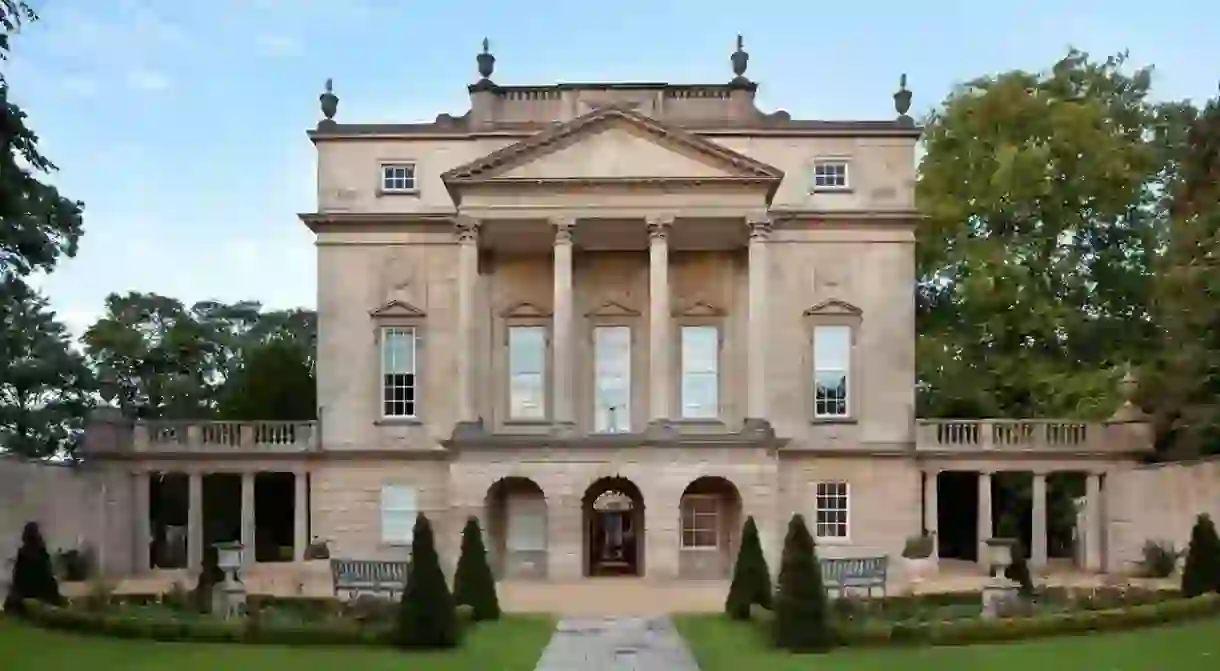The Most Impressive Buildings in Bath, UK

Bath’s reputation for being the home of some of the UK’s most beautiful architecture is world-famous, but what are the buildings you really shouldn’t miss? We round up the very best this stunning city has to offer.
Royal Crescent
Building, Architectural Landmark

Arguably Bath’s most iconic sight, the Royal Crescent is a breathtaking row of 30 terraced houses laid out in a sweeping crescent. Built between 1767 and 1774 by architect John Wood, the Younger, it’s one of the greatest examples of Georgian architecture in the country. Thanks to its Grade I listed status, the elegant Georgian stone façade remains almost untouched from when it was first built. Enjoy a picnic in Royal Victoria Park, which sits just in front of the Royal Crescent, to take in the view in its entirety.
The Roman Baths
Museum

Nestled among the city’s elegant Georgian buildings, you’ll find and one of the finest historic sites in Northern Europe. These incredibly well-preserved remains of one of the most important religious spas of the ancient world are a feat of Roman engineering – and are as beautiful as they are impressive. Follow the audioguide to join one of the hourly public guided tours to really get the most of your visit.
Pulteney Bridge
Bridge, Architectural Landmark

An instantly recognisable Bath landmark, Pulteney Bridge is a fantastic example of Palladian style. Built in 1774, to connect Bath and Bathwick across the River Avon, this Grade I listed building is most notable for having shops built across its full span, on both sides (in fact, it’s one of only four bridges in the world to be designed like this). Designed by architect Robert Adam, the bridge and the weir below are one of Bath’s most photographed scenes.
Bath Abbey
Church

The Abbey Church of Saint Peter and Saint Paul, more commonly known as Bath Abbey, is a jaw-droppingly beautiful example of Perpendicular Gothic architecture. With its grand stained windows, columns of beautiful honey-coloured stone, impressive exterior and intricate fan vaulting, it’s no surprise this Grade I listed church is one of Bath’s most popular tourist attractions. Still very much an active church, services take place throughout the week, so make sure you check the website before you visit as opening times can vary.
The Holburne Museum
Art Gallery, Building, Museum

Located in Bath’s picturesque Sydney Pleasure Gardens, The Holburne Museum is housed in the former Sydney Hotel. Originally built between 1796 and 1799, this grand three-story building designed by Charles Harcourt Masters is another wonderful example of Georgian architecture. But what makes this place so interesting is the modern extension by Eric Parry Architects, costing £11.2 million. The extension is a contemporary combination of glass and ceramic ‘fins’ glazed in blue and green and was shortlisted for the RIBA Stirling Prize for the building of the year in 2012.
The Pump Room
Cafe, Restaurant, Tea Room, Tea , British

Hands down one of Bath’s most elegant places to enjoy a meal or indulgent afternoon tea, The Pump Room started life as something quite different. Originally built to give the general public direct access to the thermal waters in the late 17th century, as it was believed to help with certain medical problems, The Pump Room still have the King’s Spring water fountain inside, where you can buy a glass of the warm spa water to drink yourself. The interior, with its grand columns, beautiful chandeliers and elegant decoration, really captures the style of Georgian high society to this day.













